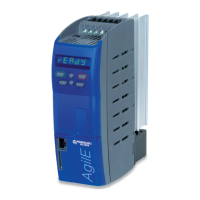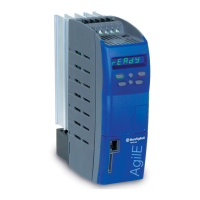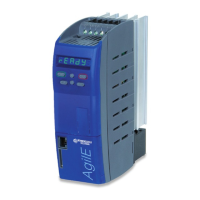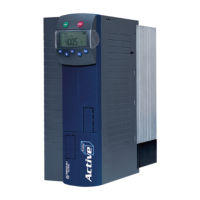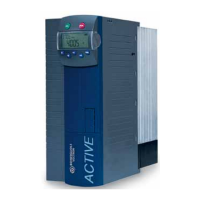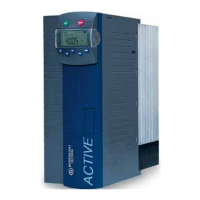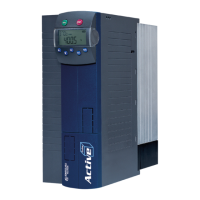Parameter descriptions
7.6.7.4 Further setting options
An offset can be set via the reference frequency channel or via the function of the electronic gear. For
example, you can set in the reference frequency channel:
Reference Frequency
Source 1
475 = "10 - Repetition Frequency" and Reference Frequency Source 2 492 = "3 - Fixed
Frequency". Via the fixed frequencies (parameters 480 … 488), you can set the required offset.
A filter can be set via PLC-function (see application manual "PLC").
7.7 V/f characteristic
606 Type V/f characteristic
Via parameter
Type V/f Characteristic 606, you can set the characteristic to linear or quadratic.
Linear V/f characteristic: |U|~ f. Factory setting.
2 - Quadratic
Quadratic V/f characteristic: |U| ~ f
2
. For applications where the torque in-
creases quadratically to the speed. Suitable for energy saving.
See chapter 8.2 “Quadratic V/f characteristic”.
Too small set values of the V/f characteristic affect the dynamic behavior of
7.8 Linear V/f characteristic
600 Starting Voltage
601 Voltage Rise
602 Rise Frequency
603 Cut-Off Voltage
604 Cut-Off Frequency
The sensorless control in configuration 110 (parameter Configuration 30) is based on the proportion-
al change of output voltage compared to the output frequency according to the configured character-
istic.
By setting the V/f-characteristic, the voltage of the connected 3-phase motor is controlled according to
the frequency. The torque to be applied by the motor at the corresponding operating point demands
the control of the output voltage proportional to the frequency. At a constant output voltage/output
frequency ratio of the frequency inverter, the magnetization is constant in the nominal operating
range of the 3-phase motor. The rating point of the motor or end point of the V/f-characteristic is set
via the guided commissioning with the parameter
Cut-Off Voltage 603 and the parameter Cut-Off
Frequency
604.
The lower frequency range, where an increased voltage is necessary for the start of the drive, is criti-
cal. The voltage at an output frequency of zero is set with parameter
Starting Voltage 600. A voltage
increase deviating from the linear course of the V/f-characteristic can be defined by parameters
Volt-
age Rise
601 and Rise Frequency 602. The parameter value percentage is calculated from the linear
V/f-characteristic. Via the parameters
Minimum Frequency 418 and Maximum Frequency 419, the
working range of the motor or the V/f-characteristic is defined.
211
V/f characteristic 06/2013 Operating Instructions
Agile
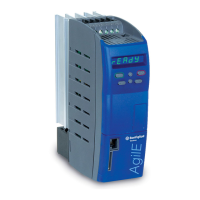
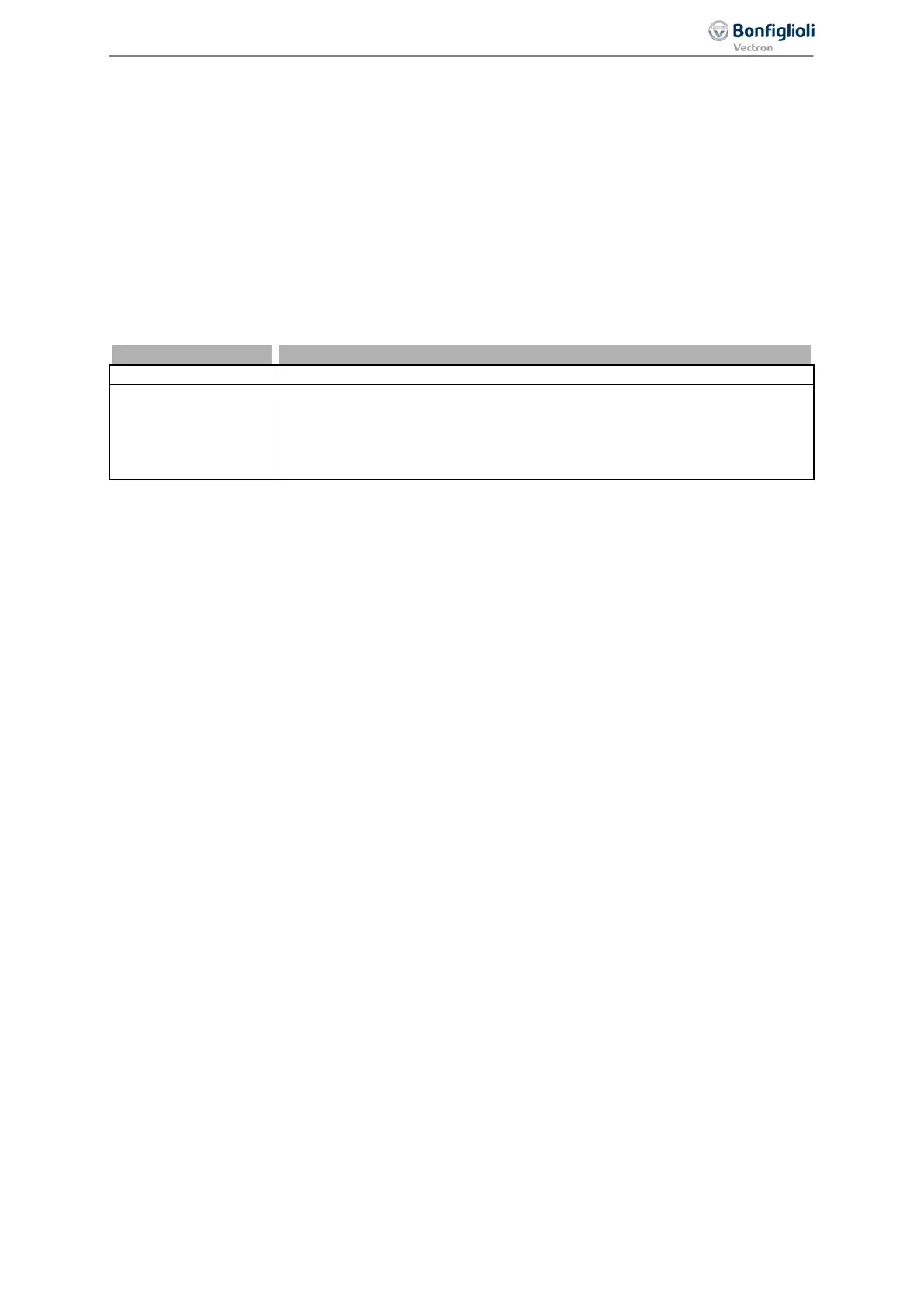